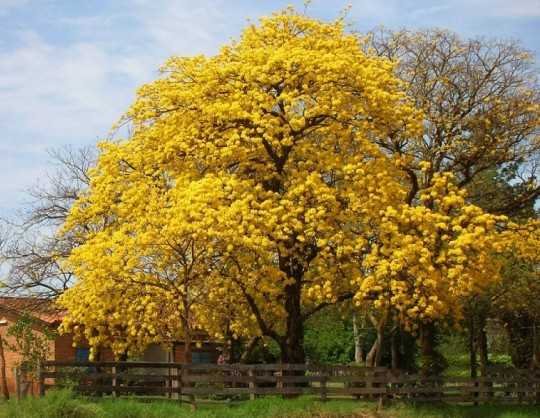Araguaney (national tree)
The Araguaney (Tabebuia chrisantha) is an autochthonous tree and its height varies between 6 and 12 meters. Its trunk is straight, cylindrical and about 60 centimeters in diameter. The flowering occurs between February and April, when it is completely devoid of leaves.
From its scientific name, Tabebuia is of indigenous origin and chrisantha is derived from the Greek words meaning "golden voice". It is also known by the names of Acapro, Curari, Araguán or Cañada, Flor Amarilla and Puy.
It is a hardwood tree, compact, of specific weight between 1.25 and 1.50. It is among the hardest of the American tropics, because if a piece is thrown into the water, it sinks like a rock. It has been used for posts and also as sleepers for railway rails.
Its flowering is massive and lasts several days. All the individuals of the area bloom synchronized, about four days after one of the few rains that surprise us in the middle of the drought. The massive flowering is very attractive for the different bees that pollinate them and for the tucusitos and other birds that steal the nectar